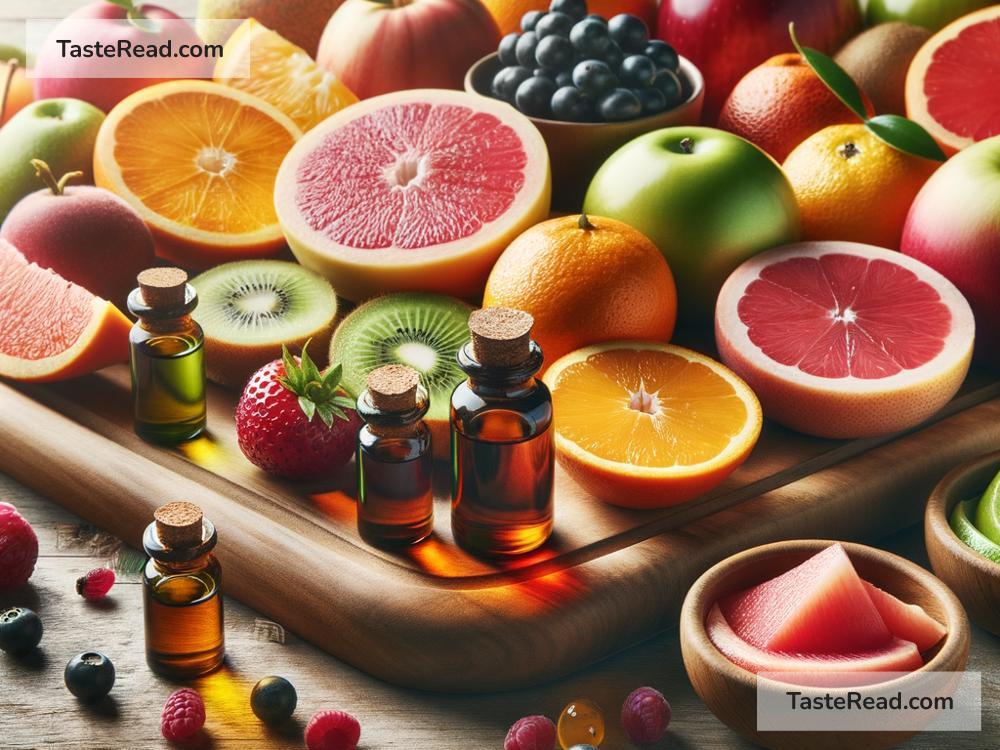How Taste and Aroma Are Interconnected in Fruits
Have you ever bitten into a fresh mango or smelled a ripe strawberry and instantly felt your mouth water? The delicious experience of enjoying fruits goes far beyond just their sweetness or tartness—it is a magical combination of taste and aroma working together. Taste and aroma are deeply interconnected, making fruits such delightful treats for our senses. In this blog, we will explore how these two senses work together to create the unique flavor of fruits and why they are inseparable when it comes to enjoying nature’s bounty.
What Is Taste?
Taste is the sensation we feel on our tongue when we eat food. Our taste buds can detect five basic flavors: sweet, sour, salty, bitter, and umami (savory). For fruits, the strongest taste signals are usually sweetness and sourness. For example, a ripe mango has a sweet taste, while a lemon is very sour. These taste signals help our body understand whether a fruit is ripe, unripe, or spoiled.
Taste is important, but on its own, it wouldn’t be enough to give fruits their full personality. Think about this: if you pinch your nose and eat an apple, it might just taste sweet—and feel kind of boring. This is where aroma comes in, adding depth and excitement to the experience.
What Is Aroma?
Aroma, or smell, is the sensation detected by our nose. Fruits release tiny molecules into the air that travel to the receptors in our nose, allowing us to “smell” their aroma. Each fruit has its own unique smell based on the specific compounds it contains. For example, bananas produce a molecule called isoamyl acetate, which gives them their characteristic sweet, fruity scent. Similarly, the unmistakable aroma of strawberries comes from a mix of fragrant molecules like methyl butyrate and ethyl acetate.
When we eat fruits, the aroma doesn’t just come from sniffing them before we take a bite. Aroma molecules are released in our mouth as we chew, traveling to the back of our throat and connecting with our nasal cavity. This process, called retronasal olfaction, is what allows us to “smell” the flavors of food from inside our mouth.
How Taste and Aroma Work Together
Taste and aroma work hand in hand to create what we recognize as flavor. While taste provides the base notes of sweet or sour, aroma adds complexity and detail. For example, when you eat a ripe peach, its sweetness hits your tongue while its floral, fruity aroma fills your nose—together, these sensations create the unique flavor of a peach.
Let’s try isolating these two senses to understand their connection. Imagine you’re eating a grape. If you lose your sense of smell (for instance, by holding your nose), you’ll mostly just perceive sweetness. The grape might taste bland or unremarkable. But when you allow your nose to sense its aroma, suddenly the grape’s flavor feels complete: you can detect its fruity, floral nuances that make it special.
This interplay between taste and aroma also explains why some fruits taste different from how they smell. Take durian, for example—a fruit famous for its strong aroma. Its smell can be overwhelming for some people, with notes of rotten eggs or onions. But once you taste durian, you’ll notice a creamy, custard-like sweetness that contrasts its scent entirely. The way taste and aroma combine in this fruit is unique and complex, influencing people’s opinions about it (you either love it or hate it).
The Role of Ripeness
Ripeness plays an important role in the way taste and aroma interact in fruits. As fruits ripen, natural chemical changes happen that enhance their taste and aroma. For example, unripe strawberries are tart and lack a strong smell, whereas ripe strawberries are sweet and produce a fragrant, sugary aroma. The ripening process breaks down starches into sugars and releases volatile aroma compounds, making fruits more appealing to both our sense of taste and smell.
Interestingly, some fruits change their balance of sweetness and aroma as they over-ripen. Bananas go from being starchy to very sweet, and their aroma becomes stronger due to the increased production of isoamyl acetate. Similarly, overripe peaches may become softer and sweeter, but their flavor might lose the fresh, light aroma we enjoy when they’re just perfectly ripe.
How This Affects Our Enjoyment
The bond between taste and aroma is a big reason why eating fruits can feel so satisfying. Fruits are full of vibrant flavors that keep our taste buds happy while tantalizing our sense of smell with their aromatic beauty. This dual stimulation makes fruits not just food, but a sensory experience.
The connection between taste and aroma in fruits also influences how we perceive freshness and quality. A perfectly ripe orange smells zesty and tastes tangy-sweet, while a bland-smelling orange might also taste flavorless. Farmers and food scientists use this connection to breed fruits that are not only sweeter but also have richer aromas, ensuring they deliver a fuller flavor experience.
Final Thoughts
Taste and aroma are like two best friends that are always together—they complement each other perfectly, especially in fruits. While taste gives us the foundational sweetness or sourness, aroma brings complexity and richness, enhancing our overall experience. The next time you bite into your favorite fruit, take a moment to appreciate how these two senses work harmoniously to create flavor magic. Whether it’s the tangy burst of pineapple or the subtle sweetness of a pear, the intertwined relationship of taste and aroma helps make fruits one of life’s simple pleasures!
Now, go ahead and enjoy your favorite fruit—your taste buds and nose will thank you.


